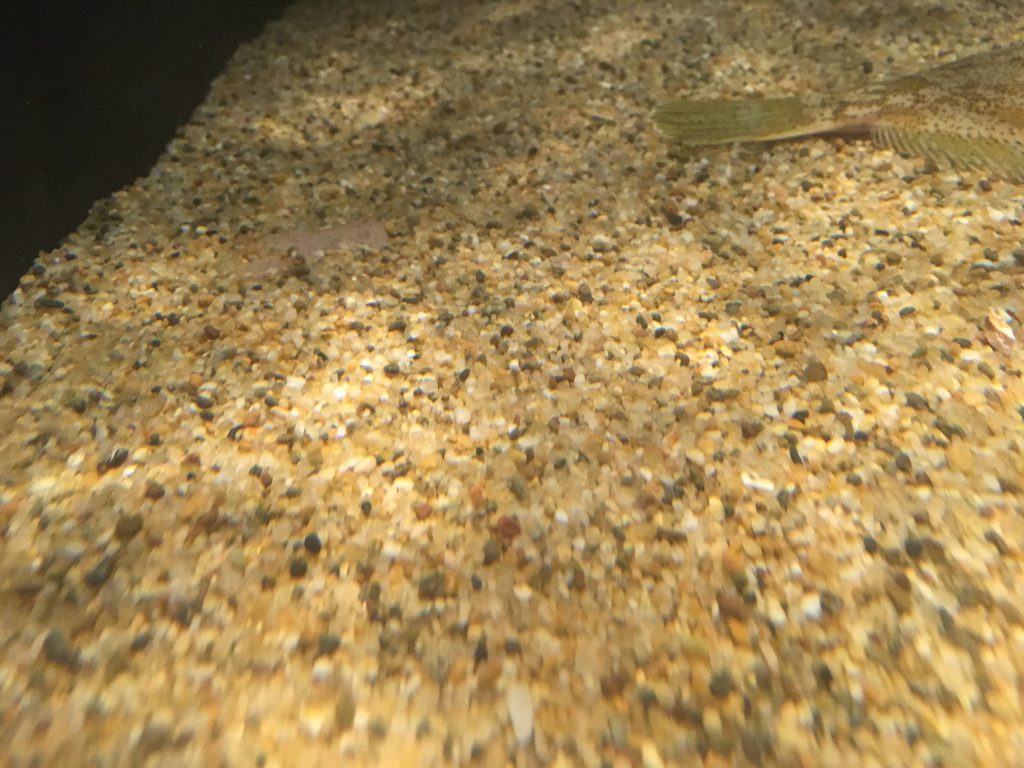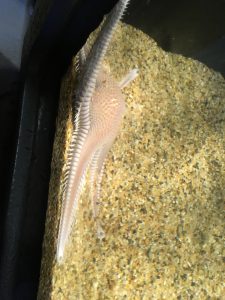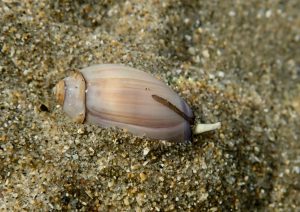We usually think of sea stars as the colorful animals that stick to rocks in the intertidal. You know, animals like Pisaster ochraceus (ochre star) and Patiria miniata (bat star). I see these animals all the time in the intertidal, and if you’re a regular reader of this blog you’ve probably seen the photos that I post here. Given how prominent P. ochraceus and P. miniata can be in the rocky intertidal, it may be a bit of a surprise to learn that not all sea stars live on rocks. In fact, some can’t even really stick to a rock.
This morning I was meandering through the Seymour Center when I stopped at a recently refurbished tank. The new inhabitants are a couple of curlfin sole (Pleuronichthyes decurrens) and their secretive and strange roommate. Here’s one of the flat fish:

5 September 2019
© Allison J. Gong
The other fish was hiding up against the wall in one of the back corners and didn’t come down until it was feeding time.
The secretive roommate was all but invisible. Here’s a photo. Ignore the fish’s tail. Do you see anybody else?

Fortunately for all of the tank’s inhabitants, feeding time was just around the corner. I knew what would happen, so I stuck my phone on the glass and recorded some video. Keep an eye on the upper left-hand corner. Watching the fish eat is entertaining, too. Just how do they manage with those tiny sideways mouths?
It’s not the greatest bit of video, but did you see what happened? That creature emerging from the sand is Astropecten armatus, a sea star that lives in sand. And did you notice how fast it moves? Most of the time it is buried under the sand and usually comes out only to grab food. Every once in a while I’ll find it on one of the walls but most of the time it is essentially invisible to human viewers on the other side of the glass.
All spread out, this Astropecten is probably a little smaller than my hand. It has a smooth-ish aboral (i.e., top) surface, lacking the spiny protuberances that Pisaster has. The texture of the aboral surface is similar to that of the bat star, Patiria miniata. The species epithet, armatus, means ‘armored’ and refers to the row of marginal plates along the perimeter of the body. These plates bear a row of spines that point up and another row that point down. Astropecten is unusual among sea stars for having suckerless tube feet. Its tube feet are pointed, and instead of being super grippy, work to push sand around so the animal can sort of bulldoze its way along. As always, form follows function!
In the wild, A. armatus lives on sandy flats, rarely exposed even at low tide. One of its favorite prey items is the olive snail, Olivella biplicata. Imagine this life-and-death encounter taking place below the surface of the sand: Olivella is burrowing through the sand, minding its own business and unaware that Astropecten is following the slime trail it (Olivella) left behind. Astropecten catches up to Olivella, shoves a couple of arms into the sand around Olivella, engulfs the snail, and swallows it whole. Eventually an empty Olivella shell is spat out. Incidentally, many small hermit crabs, especially Pagurus hirsutiusculus and juveniles of other Pagurus species, live in Olivella shells. I’ve often wondered why there are so many empty but intact olive snail shells for the hermit crabs to find, and now suppose that Astropecten‘s method of feeding might have something to do with it.
Interesting star, this Astropecten. I’m really happy that it is on exhibit again, because even most visitors will never see it, watching it come out to feed is always fun.



Great entry, Allison. As usual. Very little work has been done on our species of Astropecten, probably because we have so many other species of stars.